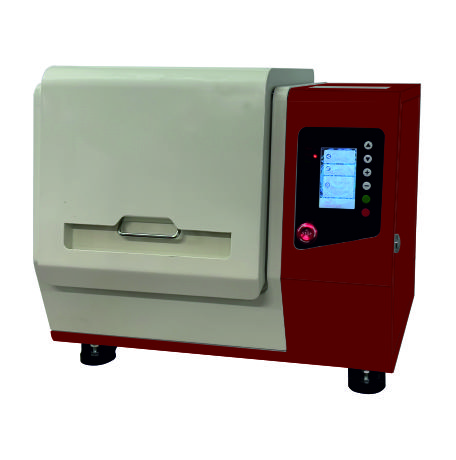Planetary Ball Mills are used to pulverize solid sample materials through a combination of impact and friction forces. They are available in models with either two or four grinding stations. These mills are compact, fully functional, highly efficient, and operate with low noise, making them ideal for use in scientific research institutions, universities, and other laboratories. A key advantage of these mills is that they can process up to four samples simultaneously, allowing for efficient and rapid sample preparation.
The Planetary Ball Mill operates on the principle of impact and friction. During operation, the grinding balls are lifted by the rotating mill and then fall onto the material to be ground. The impact of the balls helps break the material into smaller particles. Friction occurs when the balls rub against each other and the sample material, further contributing to the grinding process. This combination of impact and friction enables the mill to grind materials to a fine particle size.
Planetary ball mills are versatile and can be used for both wet and dry grinding. They are suitable for processing a wide range of materials, including hard, medium-hard, brittle, and fibrous substances. The mill’s advanced design allows for the production of very fine samples, with particle sizes that can be reduced to less than 100 nm, depending on the material being processed and the grinding conditions.
Planetary ball mills are commonly used in fields such as materials science, chemistry, biology, and environmental testing. They are particularly effective for applications that require precise and reproducible results, such as:
The design of the planetary ball mill ensures high grinding efficiency, leading to faster and more effective sample preparation
The mill operates with minimal noise, making it suitable for laboratory environments
Despite its small footprint, the planetary ball mill can process a variety of materials in small batches, making it ideal for research applications where limited sample sizes are required.
Many planetary ball mills allow for customizable settings, such as grinding speed and duration, enabling users to fine-tune the milling process for optimal results

| Application | Hard, Medium hardness, Brittleness, Fibrous and Viscous material |
| Field of Application | Geology, Metallurgy, Aviation, Lithium, Agriculture, Biology, Powders, Catalysis, Pharmaceuticals, Construction materials, Glass, Ceramics, Electronics etc. |
| Working Principle | Impact and Friction force |
| Processing Type | Grinding, Mixing, Homogenization and alloying |
| Input Feed size | <10mm |
| Output material size | <100nm |
| Ball mill speed | 20 - 800rpm |
| Speed Ratio | 1:2 |
| Time Setting | 00:01:00 – 99:59:59 |
| Grinding Bowl Volume | 50/100/500/1000ml |
| Grinding | Dry and Wet mode |
| Grinding bowl materials | Stainless steel, Agate, Tungsten carbide, Zirconia, Nylon, Polytetrafluoroethylene (PTFE), and more. |
| Emergency Stop | Yes |
| Power Supply | 1phase 230v, 50Hz |
| Dimensions (L x W x H in mm) | 750 x 550 x 1300 |
| Net Weight | Approximate 130Kg |